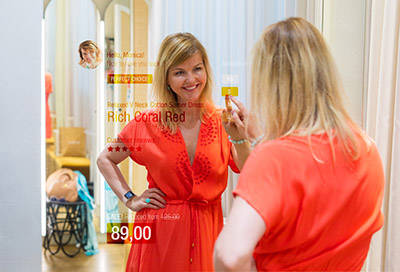Chapter 5:
Luxury Brand Retail Store Design
The Luxury Retail Store Design
Luxury retail store design should be an extension of the brand. An important part of developing a luxury retail space is creating an atmosphere that is soothing, peaceful, and unlike the high-pressure and hectic sales floors so common in chain retailing. Create a warm and welcoming environment.
Organic feelings can be communicated using warm hardwood and light colors. As with packaging, less is more in-store; and minimalism helps to highlight the product. This can be achieved using sleek surfaces and materials such as wood, steel, glass, and exposed concrete. Simple pieces of furniture and selecting natural floor finishes and textures, using glass and metal shelving combine to create a fresh modern look. Interior design choices communicate a message to the customer about your luxury brand.

The Experience is Everything
Shopping for a luxury good is a unique and memorable experience. The interior design of your store communicates just as much about the brand as the product itself. The store should create an atmosphere that communicates a lifestyle brand.
Louis Vuitton does this exceptionally well. Upon entering, the interior décor grabs your attention. An open concept design with hardwood flooring and whitewash walls immerse the shopper in the store’s elegance. A bright yellow wall grabs your attention and highlights a comfortable seating area. Carpets, plants, art, and even a foosball table create a homey feel. Everything is designed tastefully to highlight Louis Vuitton’s heritage while remaining stylish, welcoming, and classy.
Technology and Luxury Retail
Millennial and Gen Z shoppers have different expectations when it comes to retailing. They want an experience that is personalized and seamlessly integrated both online and offline.

Here are 3 ways technology is rapidly changing luxury retail:
- Augmented Reality – new AR technology, like smart mirrors, are allowing shoppers to seamlessly interact with luxury products and quickly gather relevant information such as components, price, or origin. AR is also enabling consumers to visualize and “try” new products at home before making a purchase.
- Voice Assisted Recommendations – Amazon’s Alexa, Google’s Assistant, and Apple’s Siri are allowing luxury brands to successfully position themselves as reliable sources for AI-driven recommendations. In particular, AI-powered subscription models are emerging as a major sales accelerator for online retailing.
- Voice Commerce – a customer’s voice is used as a new user interface. With Google Home, Amazon Echo, and Apple HomePod, affluent customers are now buying luxury products without having to visit a website or a retail store.
Luxury goods shoppers value convenience. E-commerce should integrate seamlessly with the luxury retail store experience. The use of tech in luxury retail stores can help bridge the gap between timeless sophistication and convenience.

